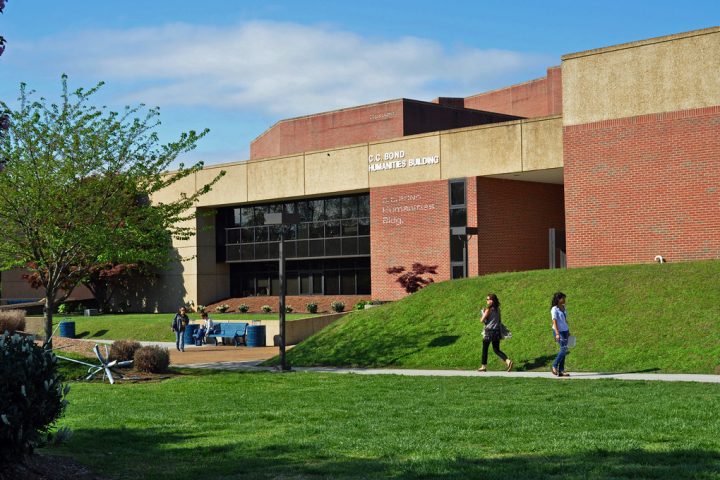
Chattanooga State Community College (Lawrence G. Miller/Flickr)FacebookTwitterLinkedInRedditEmail
“Free college” has become a key talking point among Democratic presidential hopefuls who believe eliminating tuition at public colleges and universities will help curb student debt and encourage more Americans to earn degrees.
U.S. Sen. Elizabeth Warren and U.S. Sen. Bernie Sanders, two front-runners in the 2020 Democratic primary, have proposed making undergraduate tuition free at public two- and four-year institutions. Another top contender, Vice President Joe Biden, supports offering two years of free tuition at community colleges.
Meanwhile, some states already are moving forward with their own initiatives. The governor of New Mexico recently announced a plan to stop charging residents tuition at all 29 of its public colleges and universities. Earlier this year, legislators in more than 20 states filed “free college” bills, many of which aimed to cover tuition at public colleges and, in some cases, some other education-related expenses. In 2015, Tennessee became the first to offer free tuition at community colleges and technical schools statewide with its Tennessee Promise program, which also covers mandatory fees such as the technology fee and student activity fee.
This is a complex topic, so we asked one of the country’s foremost scholars on college access and affordability for advice on how journalists can improve their coverage of this issue. Laura W. Perna, an education professor who’s also the executive director of the University of Pennsylvania’s Alliance for Higher Education and Democracy (AHEAD), shared a variety of recommendations and insights.
We’ve combined them into these five tips:
- Probe the details of “free college,” “tuition-free” and “college promise” programs.
Education leaders, lawmakers and others sometimes use these three terms interchangeably to describe programs launched in recent years to encourage more people to go to college by paying some of their college expenses. When reporting on one of these programs, Perna says it’s crucial for journalists to explain exactly which expenses the program covers, who qualifies, which higher education institutions are included and what rules students must follow to maintain that funding from year to year.
“There are many seemingly similar programs being talked about, but there are important nuances to be paying attention to,” she says. “Some programs have the same names and different characteristics and some have different names but similar characteristics.”
Sometimes, “free college” programs only offer free tuition — a relatively small slice of the total price of attending a college, university or technical school in the U.S. While “tuition-free” initiatives cover tuition, they may exclude the various required fees that appear on tuition bills. “College promise” programs may also have a geographic component, meaning they limit eligibility to students who live in a certain location or attend a specific school or group of schools.
- Point out who benefits — and who does not.
Many of these programs only cover the amount of tuition left over after a student’s grants, scholarships and other federal and state aid money are applied. This is called a “last dollar” approach, and is most beneficial to students who don’t qualify for other financial assistance. Low-income students generally don’t benefit from “last dollar” programs because these students usually receive need-based financial aid, including federal Pell grants.
“Low-income students might not get any new money from these programs,” Perna says. She notes that low-income students benefit most from programs that cover the full cost of tuition regardless of other aid received. This approach, referred to as “first dollar,” allows low-income students to use their other federal and state grant aid for other education-related expenses such as books, food and housing.
Perna also suggests journalists pay attention to who these programs exclude. They often require students to enroll full-time or begin taking courses during the fall semester after high school graduation.
- Explain funding sources and how funding will be maintained over time.
Perna urges journalists to report on how these programs are funded and how organizers plan to maintain funding over time — especially if the number of students using the program increases over time. “Different programs have different sources of funding,” she says. “The Oregon Promise [program] is funded by state appropriations, which is less stable than Tennessee Promise, which has a dedicated state source. At the local level, some programs are funded through local appropriations and some are funded through private philanthropy. Different sources have different pros and cons associated with them.”
- Investigate these important questions:
- How are these programs being marketed and how are students, families and academic advisers interpreting the messaging of ads and other promotional materials? Do students know about the program and believe that they can benefit from it? Is it clear what costs are covered, how they money is distributed, who qualifies and what students must do to maintain their funding?
- What are colleges and universities doing to support a potential influx of students — to make sure they can handle the academic workload, meet the requirements to retain the tuition benefit and complete the credits necessary to earn a degree? What are community colleges doing to support students who want to transfer to a four-year institution to earn a bachelor’s degree? “It’s important that, as programs are implemented, we also pay attention to the extent to which students are academically ready,” Perna says. “Certainly money matters for college going, but academic preparation and other factors do as well. If they [students] are not ready to take college classes … that’s something that can derail their efforts to earn a degree.”
- Are high-performing students — those who graduated at the top of their high school class, for instance — choosing community colleges over four-year institutions when they get free tuition at community colleges? If so, how are campus administrators responding, considering research has found that “undermatching” — when high-achieving students enroll in less selective institutions — is associated with lower odds of graduating and lower career earnings? Also, what are the implications for schools where students cannot get free tuition? Are local private colleges or public institutions in neighboring states losing students?
- If community colleges enroll larger numbers of high-performing students, how might that affect lower-performing students? “I wonder about how the enrollment of more full-time, high-achieving students may shift the focus at community colleges to these students, and away from their other students – including part-time, older students,” Perna says.
- Familiarize yourself with the academic research on the topic.
Perna urges journalists to read and stay current on research examining programs that cover student tuition. The following scholars, she says, have expertise in this topic: Michelle Miller-Adams, a senior researcher at the Upjohn Institute for Employment Research; Brad J. Hershbein, an economist who is director of information and communications services at the Upjohn Institute; Jennifer Iriti, a research scientist at the University of Pittsburgh’s Learning Research and Development Center; and Lindsay Page, an associate professor of psychology in education at the University of Pittsburgh School of Education and a research scientist at Pitt’s Learning Research and Development Center.
The California College Promise Project and the College Promise Campaign are other sources of relevant resources, she says.
Perna also recommends checking out the online searchable database of college promise programs that her team at the University of Pennsylvania created. They are continually updating the database, which journalists can use to study and compare various college promise programs.
Reporters also should be on the lookout for a new volume of research focusing on free college, tuition-free and college promise programs that the American Educational Research Association plans to release in November.

